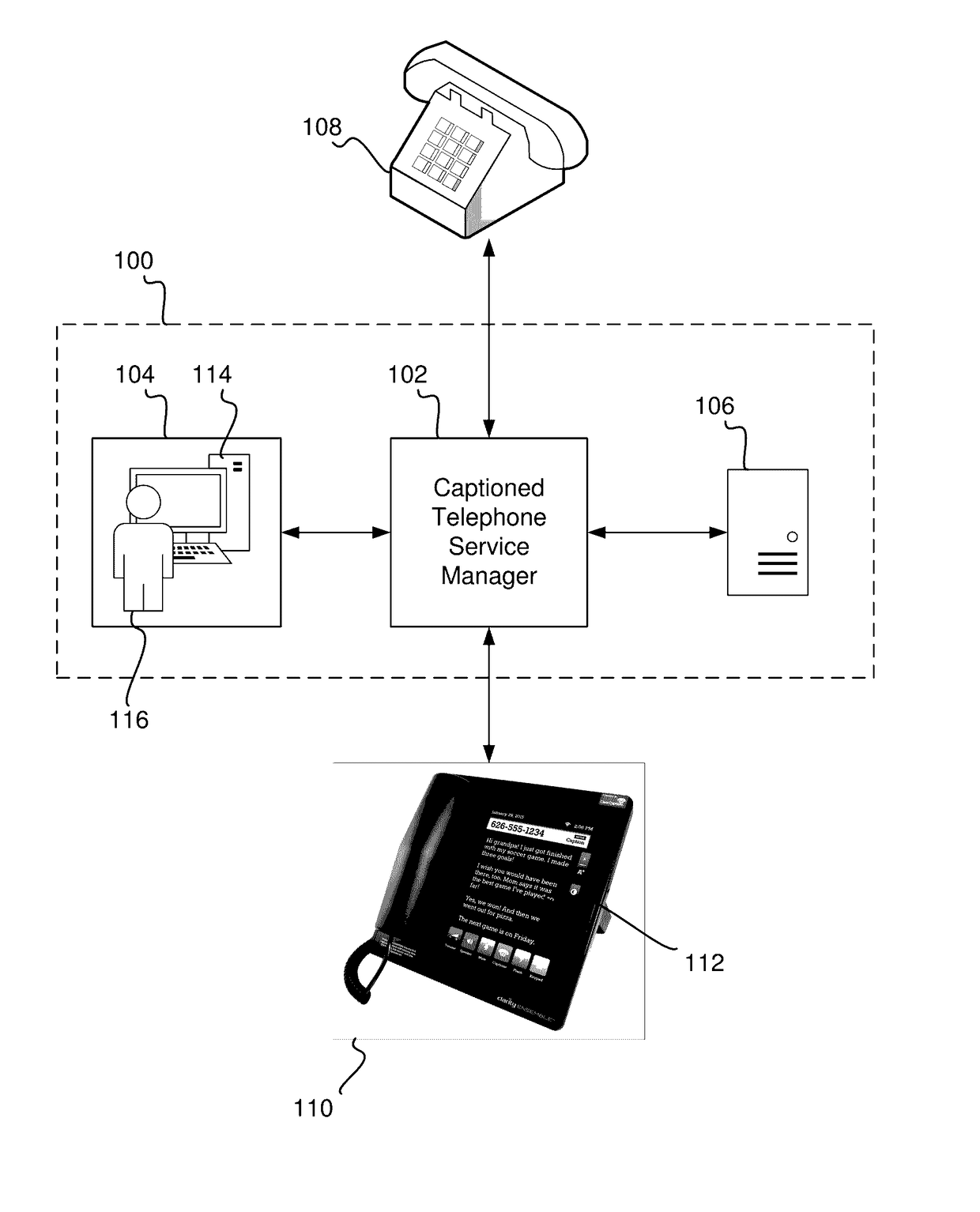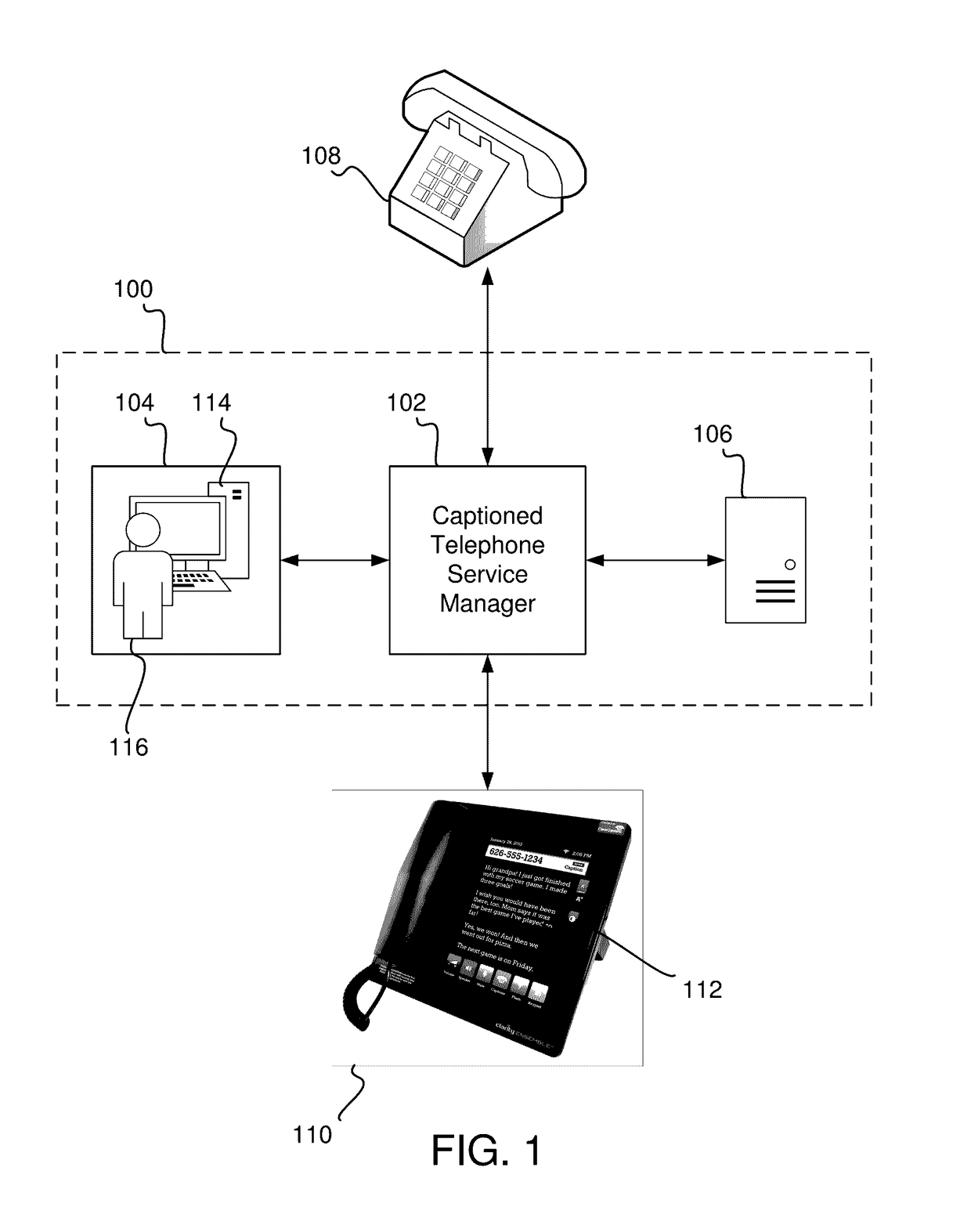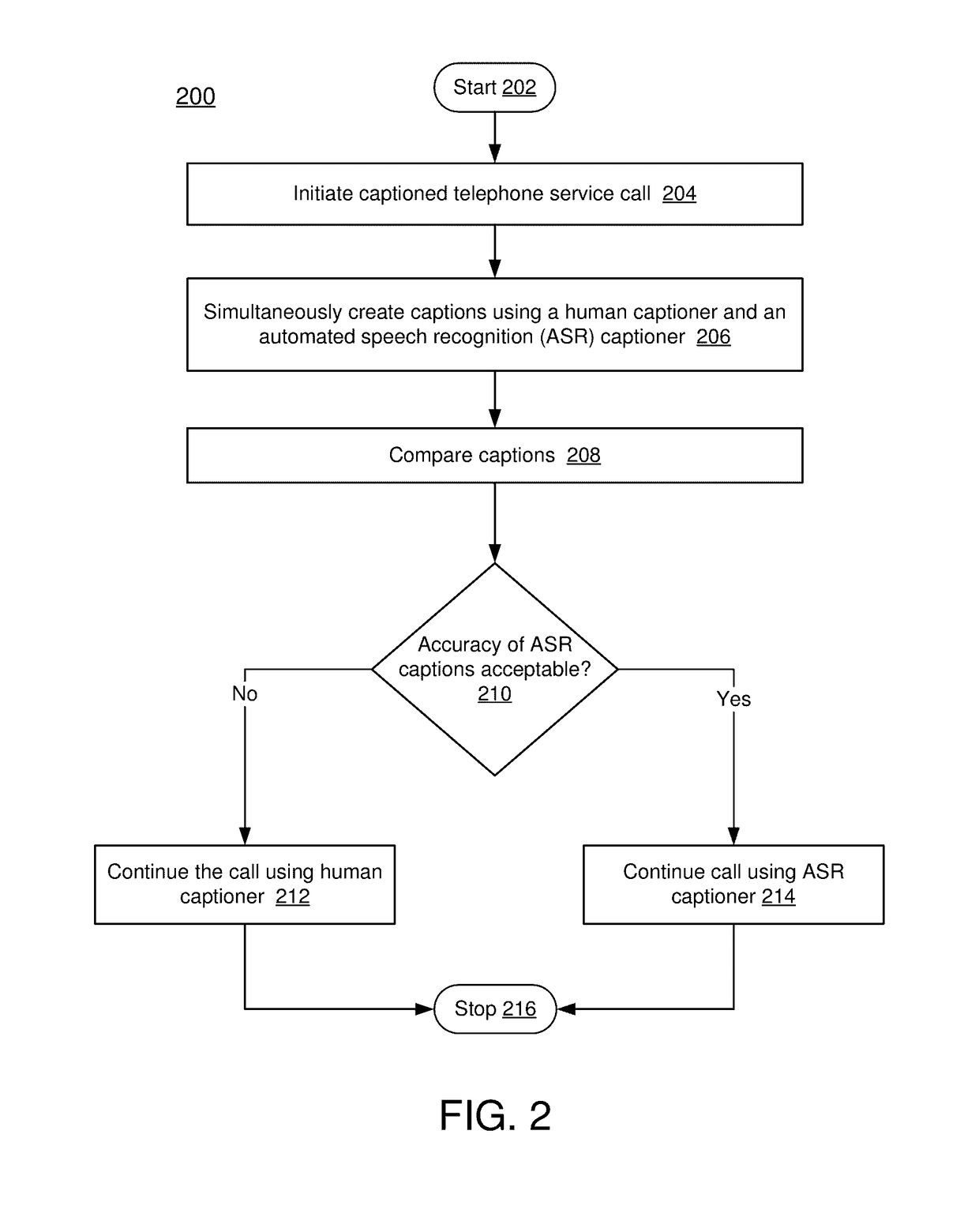Method and system for providing captioned telephone service with automated speech recognition
a telephone service and speech recognition technology, applied in the field of captioned telephone service, can solve the problems of difficult or impossible audio communication, deaf or speech-impaired persons, and the problem of traditional telephony for persons who are deaf, hard of hearing or speech-impaired,
- Summary
- Abstract
- Description
- Claims
- Application Information
AI Technical Summary
Benefits of technology
Problems solved by technology
Method used
Image
Examples
Embodiment Construction
[0019]Embodiments of the present invention are directed to improved methods and systems for providing captioned telephone service (CTS), including internet protocol caption telephone service (IP-CTS). Embodiments of the present invention are further directed to methods and systems for providing accurate captioned telephone service using automated speech recognition assisted by human captioning. In an exemplary embodiment, an automated software recognition (ASR) software-based captioner is run alongside a live, human captioner for a short period of time. The accuracy level of the two sets of captions is compared to determine whether the party being captioned is someone for whom ASR is an acceptable service. If the accuracy of ASR captioning is acceptable, then the human captioner's stream is cut off and the ASR captioner takes the call forward. If the ASR stream is below some threshold (or significantly worse that the human captioner), then the ASR captioner cuts off and the human ca...
PUM
 Login to View More
Login to View More Abstract
Description
Claims
Application Information
 Login to View More
Login to View More - R&D
- Intellectual Property
- Life Sciences
- Materials
- Tech Scout
- Unparalleled Data Quality
- Higher Quality Content
- 60% Fewer Hallucinations
Browse by: Latest US Patents, China's latest patents, Technical Efficacy Thesaurus, Application Domain, Technology Topic, Popular Technical Reports.
© 2025 PatSnap. All rights reserved.Legal|Privacy policy|Modern Slavery Act Transparency Statement|Sitemap|About US| Contact US: help@patsnap.com



